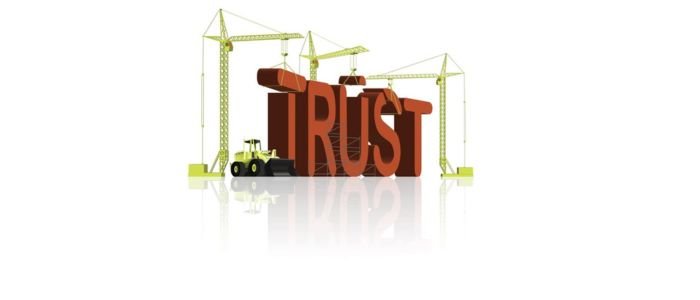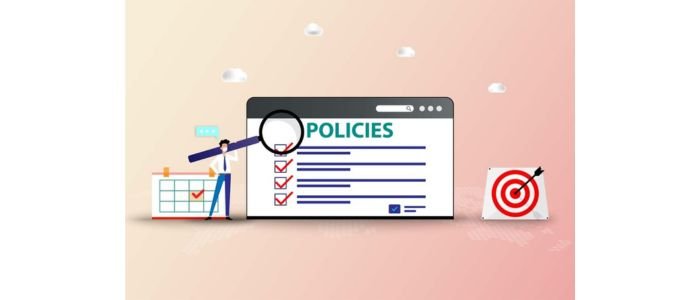Why Lead Generation Matters in Addiction Treatment?
Lead generation is a lifebelt for addiction treatment centers. Each lead is a person who needs help to recover. Consistent lead flow makes sure that treatment facilities provide care to people struggling with addiction, support staff, and maintain their operations. Generating such leads is not easy. The addiction treatment industry is controlled by strict regulations, like CFR Part 2, TCPA, and HIPAA, where patient’s privacy and data is protected. It also restricts how personal data can be shared or collected.
Thousands of addiction treatment centers compete for visibility, which is why costs on platforms like Facebook and Google have skyrocketed. It becomes difficult for small centers to stay in the competition. Individuals looking for addiction treatment have urgency, skepticism, and fear. Building trust via clear communication and ethical marketing is challenging. These competitive, ethical, trust, and legal-related obstacles make lead generation complex and critical for addiction treatment centers.
Addiction Treatment Lead Generation: Common Challenges & Solutions
Generating leads for addiction treatment centers is a blend of sensitive audience concerns, high competition, and strict regulations that make it resource-intensive and complex. Below are top challenges centers face and actionable solutions to overcome them.
1. Building Trust with Patients

Challenge: Patients struggling with addiction face massive stigma. They look for treatment while also feeling skeptical and vulnerable. Convincing patients to trust your treatment facility to make the first call is difficult.
Why It Happens: People fear being misled, hidden costs, and judgement. They have negative experiences in the past or know a person who did. This makes them cautious about guarantees from recovery centers.
Solution: Display real patient testimonials, accreditations, and certifications on your ads and website. Focus on empathy in each message and avoid exaggerated claims. Promote transparent communication about treatment services and clear pricing builds credibility. This assures patients that they are in safe hands.
2. Regulatory & Compliance Issues
Challenge: Addiction treatment facilities have to adhere to strict laws like 42 CFR Part 2, TCPA, and HIPAA. These control how personal health information is shared, stored, and collected during the lead generation process.
Why It Happens: These rules protect patients’ data and maintain privacy. Many recovery centers don’t have the knowledge or proper systems to remain compliant. Mistakes like buying non-compliant leads and unsecured communication channels can result in loss of credibility and heavy fines.
Solution: Leverage HIPAA-compliant CRM systems, secure messaging tools, and encrypted data storage. Partner with certified lead generation partners only who follow compliance standards. Regular compliance training of admissions and marketing staff is needed to build patient trust and avoid costly errors.
3. Balancing Lead Quality & Quantity
Challenge: Treatment facilities swing between generating a large volume of leads and making sure these leads are ready for admission and qualified.
Why It Happens: Poorly optimized ad campaigns and way too much dependency lead aggregators result in duplicate or irrelevant leads, wasting resources and time.
Solution: Use tools that detect fake or duplicate submissions and implement strict lead verification processes. Work with reputable addiction treatment lead generation providers that prioritize quality. Refine your targeting benchmark to attract clients looking for treatment.
4. Rising Competition in the Market
Challenge: Thousands of marketing agencies and addiction treatment centers target almost the same audience.
Why It Happens: Increased demand for addiction treatment services leads to market saturation and it pushes advertising cost to soar on platforms like Google Ads and Facebook. Small and mid-sized recovery centers battle to compete with larger facilities with bigger budgets.
Solution: Keep your focus on targeting niche programs. Invest in Local SEO to appear in search results in your region. Use targeted campaigns on various social platforms to reach demographics instead of costly and broad audiences.
5. Managing ROI & Marketing Costs

Challenge: Advertising market price for addiction treatment-related keywords have the highest across different industries, making ad campaigns challenging to scale and expensive.
Why It happens: Fierce advertising restrictions coupled with competition exceeds the CPL (cost-per-lead) and CPC (cost-per-click) on main platforms. Small recovery centers struggle to manage expenses without having an idea about ROI.
Solution: Radiate your strategy by combining pay-per-call with content marketing and SEO. Consider smart pay-per-call campaigns which offer a performance-based approach. Allocate budget to the highest-performing channels and use analytics to track results.
6. Ethical Marketing Practices
Challenge: Misleading or aggressive marketing methods can lead to legal issues and harm your reputation in this industry.
Why It Happens: The pressure to get admissions can make some treatment facilities hide costs or make magnified claims, which backfires ultimately.
Solution: Prioritize empathy and honesty in every marketing effort. Clearly outline realistic outcomes, pricing transparency, and treatment options. Ethical marketing keeps you compliant and fosters trust, leading to long-term patient relationships.
7. Automation & Technology Challenges
Challenge: Manual processing leads creates bottlenecks in admissions and slow down response times.
Why It Happens: Most treatment facilities lack integrated CRM tools and lean on outdated systems. This leads to missed opportunities when patients don’t get immediate follow-ups.
Solution: Implement appointment scheduling, automated email responses, and call-tracking features with advanced CRMs. Automating routine tasks enables your staff to focus on providing personal care when it matters most and converting high-quality leads.
8. Standing Out in a Crowded Digital Space
Challenge: The best treatment facilities in the world also struggle to stand out in an oversaturated digital market, even as the global addiction treatment industry grows from USD 9.44 billion in 2024 to an expected USD 16.22 billion by 2034 at a 5.56% CAGR.
Why It Happens: Social media platforms and Google have restrictions on addiction-related ads which limits online visibility. At the same time, the same messages across competitors make it different to differentiate themselves.
Solution: Use content marketing, create guides, videos, and blogs that provide value and educate. Encourage patients to leave reviews and optimize GPB (Google Business Profile) for local searches. Use startling stories in your social media and ads to create an emotional connection with the patients.
9. Building Sustainable Lead Pipelines
Challenge: Depending only on paid ads makes treatment facilities vulnerable to fluctuating platform policies and cost changes.
Why It Happens: Paid ad campaigns confer immediate results but this approach does not build a long-term online brand presence. When ads pause or stop, so do the leads.
Solution: Infuse short-term strategies like SEO, community outreach, content creation, and PPC. This will create an ever-lasting organic presence resulting in a steady leads flow over time and lowers dependency on paid marketing sources.
10. Attribution & Tracking Issues
Challenge: Measuring which marketing strategy brings the most admissions can be difficult in multi-channel campaigns.
Why It Happens: Without bona fide tracking systems, it becomes hard to attribution conversion to lead sources, keywords, and specific ads, leading to wasted ad spend.
Solution: Use multi-touch attribution with analytics tools, call tracking, and UTM parameters. Such tools confer insight into which ad campaign generates more ROI, further enabling you to maximize results and optimize budgets.
11. Limited Local Visibility
Challenge: Treatment facilities don’t always show up in local searches even if they serve a specific geographic level.
Why It Happens: Lack of reviews becomes low ranking, inconsistent NAP (name, address, phone), and underscoring local SEO optimization.
Solution: Use local keywords in your website content, gather authentic patient reviews, and optimize GBP to capture nearby audiences.
12. High Patient Drop-Off During Intake
Challenge: Many patients leave during the process after initial contact.
What It Happens: Lack of clarity about costs and insurance, delayed responses, and complicated admissions procedures discourage patients.
Solution: Implement instant follow-ups, provide clear information upfront, and simplify the intake process via automated tools like email reminders and SMS.
13. Ever-Changing Digital Advertising Policies

Challenge: Advertising platforms like Google and Facebook update rules frequently for addiction treatment-related ads, making visibility and compliance harder.
Why It Happens: Strict policies are implemented to prevent unethical practices but it affects legit recovery centers.
Solution: Stay updated with platform policies by diversifying ad spend across various platforms to lower risk and obtain necessary certifications like Google’s LegitScript.
14. Difficulty Engaging Caregivers & Families
Challenge: Families play a major role in the decision-making process, but marketing strategies seldom target them directly.
What It Happens: Many campaigns focus on patients looking for treatment and ignore the influence of friends and family.
Solution: Create ad campaigns and dedicated content aimed at families. Add support resources, FAQs, and guides. Also make sure the message is non-judgmental and compassionate.
15. Limited Brand Awareness
Challenge: Addiction treatment facilities grapple to create strong brand recognition in a packed market.
Why It Happens: Most recovery centers focus on paid ads and don’t invest in long-term brand-building methods, like social media engagement, PR, or SEO.
Solution: Develop an accordant brand voice on every platform, engage on social channels, create authority by publishing helpful resources, and invest in content marketing.
Conclusion
Generating leads in the addiction treatment space is challenging but it gives a chance to build real connections and innovate. The 3 keys are: understanding that trust takes time, being transparent, and staying compliant. Your addiction treatment center will protrude if it starts seeing barriers as opportunities. Every strategy from pay-per-call to patient-focused content and local SEO should reflect clarity and empathy. When you keep smart marketing approaches and integrity in front, you attract the right audience at the right time.
FAQs
Is it legal to buy addiction treatment leads?
Yes. It is legal to buy addiction treatment leads as long as the leads come from HIPAA-safe and compliant sources and also follow state and federal regulations.
How can addiction treatment centers reduce lead costs?
Combine organic strategies like content marketing, local optimization, and SEO with paid ads and pay-per-call to reduce acquisition costs.
Do pay-per-call leads work for addiction treatment centers?
Yes. Pay-per-call delivers high-intent and high-quality leads because patients calling shows strong intent to get treatment.
Why is lead generation important for addiction treatment centers?
It provides a steady flow or qualified leads and inquires. This helps addiction treatment centers to suppose people who need help and maintain admissions.
What is lead generation for addiction treatment centers?
Lead generation is a process of attracting and converting people looking for addiction recovery options into patients for addiction treatment centers.


Leave a Reply